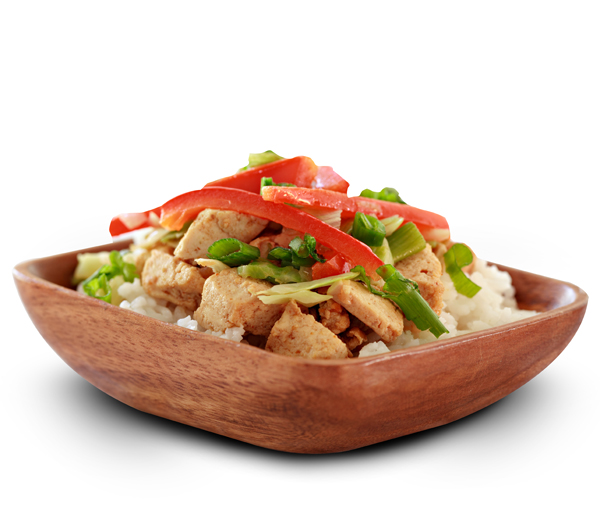
If that extra wiggle room you had in your jeans a few months ago is gone and instead, now have to wiggle just to pull your pants up, you’re not alone. It’s no wonder that after the indulgences of the past few weeks that January is one of the most popular times to start a new diet. And why not? It’s a new year with new prospects.
But with every diet promising to melt away the pounds, which one should you choose? Do you go low-carb? Low-fat? Diet shakes? Registered Dietician Sharie Youmans, MS, RD, LD/IN, CNSD, breaks down some of the most popular diets out there and explains the pros and cons of each.
Diet: Low-Carb

Key Points: Replaces carbohydrate sources with fat and protein; can limit carbohydrate sources to as little as 10 percent of your total caloric intake
Best For: Those looking for quick results
Low-carb diets have been around for decades and became wildly popular with the Atkins gurus of the ‘70s chowing down on steak and eggs three times a day. However, the resurgence of this type of diet promotes a much more heart-healthy approach. “The protein sources have to be lean and low in saturated fat. We’re not talking about 1-pound cheeseburgers at every meal,” says Sharie. She explains that the low-carb approach is effective because your body is forced to burn fat for fuel rather than carbohydrates and that the results can be noticed within the first week.
“For those looking to get jump started, the low-carb diet is effective, but they have to realize that the weight loss will plateau over time,” says Sharie. She adds that those on a low-carb plan need to consider their protein sources and realize that this is not a
long-term lifestyle.
“Going low-carb is a good way to drop quick pounds, but staying on too low of a carbohydrate plan can have consequences over time,” she says, citing kidney stones, osteoporosis and ketosis as examples. She also cautions that exercise is key in any weight loss plan and, with too few carbohydrates, the body won’t have enough energy to exercise efficiently or function normally, thereby lowering metabolism and decreasing the effectiveness of the weight loss plan.
Low-Carb Diets: Atkins, South Beach, Paleo
.jpg)
Candice’s Low-Carb Almond Flour Brownies Photo and recipe courtesy of Candice Wong, yourlighterside.com
2 100g 85% Lindt Chocolate Bars
8 oz (1cup) unsalted butter
11⁄2 cups Xylitol*
1⁄2cup Splenda*
3 large eggs
2 tsp pure vanilla extract
1⁄4 cup unsweetened dutch process cocoa powder
1⁄4 tsp salt
11⁄4 cups ground almonds
*OR 1 cup sweetener of choice
Preheat oven to 350°F. Line 8×8-inch or 9×9 -inch baking dish with parchment (or grease with butter). Melt butter and Lindt Chocolate in a heat-proof bowl. Stir with a whisk until completely smooth. Set aside. In a mixing bowl, add eggs, Xylitol and Splenda. Using a whisk attachment, beat until the mixture is pale and doubled in volume. Whisk the cocoa powder into melted chocolate/butter mixture until smooth. Quickly whisk in 1/3 of egg/sweetener mixture. Carefully fold in the remaining egg mixture, almond flour and salt. Mix just until combined. Pour batter into prepared pan. Bake 25-30 minutes. Let cool in pan before removing and cutting. Cut into 12 equal pieces.
Diet: Low-Fat
Key Points: Replaces fat and protein sources with carbohydrates; can limit fat intake to as little as 10 percent of total calories
Best For: Those looking for a heart-healthy diet plan
Low-fat diet plans rose to popularity in the 1980s when the idea that eating fat made you fat was the mantra of dieters everywhere—hence the introduction of low-fat and diet foods that unassuming dieters ate freely while their waistlines expanded. Fast-forward to the year 2013 and the low-fat trend has a whole new look.
“The low-fat diet emphasizes more fruits and vegetables, so automatically you are getting more antioxidants and fiber,” says Sharie. On a low-fat plan, animal-based fats, the unhealthy saturated kind, are eliminated and heart-healthy mono-unsaturated fats, like those found in canola, olive and peanut oils, are incorporated.
“This is a great diet to try for those who have a pre-existing heart condition,” says Sharie, who adds that the higher potassium consumption from plant sources helps lower blood pressure.
As for results, Sharie points out that low-fat plans are effective with weight loss, but the results won’t be as quick as with a
low-carb plan.
“You’ll get the same results, but the weight loss will be more steady over the long haul rather than the drastic drop you’ll see on other plans,” she says.
Low-Fat Diets: Ornish, Macrobiotic

Gluten Free Stuffed Pizza Photo and Recipe Courtesy of Candice Wong, yourlighterside.com
Makes a 10-inch stuffed pizza.
11⁄2 cups packed cooked, minced chicken breast
11⁄2 cups packed mozzarella, shredded
1 tbsp parsley, dried
1 tsp basil
1⁄2 tsp onion powder
1⁄2 tsp garlic powder
Pizza sauce
Toppings
Extra Cheese
Preheat oven to 350°F. Process chicken and cheese together. Mixture will resemble a meal/thick, dense crumb consistency. Press a little over half of the chicken/cheese mixture on in a 10-inch spring form pan lined with parchment. Top with parsley, basil, onion and garlic powder. Top with sauce and toppings. Add the rest of the chicken/cheese dough, pressed lightly down. Top with sauce, toppings and cheese. Bake for 12 minutes. Let cool for 5 minutes. Slice and serve.
Diet: Mediterranean

Key Points: Emphasis on fruits, vegetables, whole grains and olives, with lean animal protein sources in moderation
Best For: Those looking for a more balanced approach to dieting
Sharie refers to the Mediterranean diet as one with “no big fireworks or bells and whistles.” Rather, the Mediterranean diet incorporates a balanced approach to weight loss through a diet rich in fresh whole foods.
“If someone isn’t looking to go into hardcore diet mode, then this is definitely a plan they should try,” says Sharie. There is no actual structured plan. Rather, the diet mimics the eating habits of the different regions along the Mediterranean coast of Europe. The focus is on fresh, seasonal whole foods, primarily fruits and vegetables. Fats come from healthy sources like olive oil, and proteins come from beans and nuts with a smaller emphasis on animal sources. Lean meats, cheeses, eggs and the like are all included in moderation. And, of course, the meals are usually accompanied by a glass of red wine (optional), known to be high in antioxidants.
The theory is that the combination of these rich sources of antioxidants, vitamins, minerals and fiber, along with a physically active lifestyle, are what have kept the instances of chronic diseases very low among those living along the Mediterranean coast for centuries.
Diets Similar to Mediterranean: DASH, Mayo Clinic Diet, Volumetrics
Diet: Structured Plan

Key Points: A specific meal plan and/or packaged meals are incorporated with counseling sessions or online support.
Best For: Those who need guidance and support
For those who feel overwhelmed just thinking about how to diet, structured plans like Nutrisystem and Weight Watchers can take the burden off your shoulders.
Sharie points out that research has proven that commercial structured programs are effective at helping people lose weight partly because of the calorie control these programs offer (Nutrisystem delivers the meals to your doorstep, and Weight Watchers employs the use of the “Point System.”) and partly because of the online support system.
“You need a cheering section when you’re trying to lose weight, and if you can’t find it at home, then finding it online is the next best thing,” says Sharie, who praises these plans for their support systems and educational approach to better eating but also offers some words of advice if you’re considering one of these programs.
“These are great to kick start your diet plan, but you have to learn from them,” she says. “If you don’t change your diet for the long haul, the weight will come back on.”
Structured Plans: Weight Watchers, Nutristystem, eDiets Deliciously Yours, Freshology
Diet: Meal-Replacement
Key Points: Calls for replacing meals and snacks with specially designed bars, shakes and other snack products
Best For: Those looking for quick results and who aren’t opposed to replacing meals
How many times have you heard “you need to eat six times a day?” Easier said than done for many people. Six times a day may sound overwhelming for those who barely have time to eat lunch, but the concept may also mislead some into thinking they can eat six entrée-sized meals every day. If the thought of finding enough time for that many trips to the break room overwhelms you, then meal-replacement programs may be your answer.
“Meal replacement shakes are very effective, and the results are quick,” says Sharie. Similar to structured diet plans, meal-replacement plans generally require that you replace one or more meals with either a shake or bar that is low in calories but offers the required amount of nutrients. They also take the guesswork out of counting calories and coming up with healthy snack and meal ideas. Sharie cautions dieters to read the ingredient labels, though, before they consume any of these products.
“You have to look out for stimulants and appetite suppressants. If you have high blood pressure or are sensitive to caffeine, you’ll have to be careful,” she says, noting that these are meant to be meal replacements not to be consumed with another meal. For people who aren’t satisfied with a shake or bar, these programs wouldn’t be beneficial.
Meal Replacement Diets: Slim-Fast, Medifast, Special K Diet, Biggest Loser Club.
Diet: Vegetarian

Key Points: Varying degrees of vegetarianism
Best For: Those who can commit to planning meals ahead of time and researching available options
Vegetarians don’t eat meat, right? Well, yes, but the term vegetarian actually encompasses several different eating plans, allowing for as much or as little flexibility as you want.
“Vegetarian diets can be very healthy, and there are plenty of options to choose from,” says Sharie. Lacto-vegetarian diets include dairy products, lacto-ovo-vegetarian diets include eggs and dairy and pesco-vegetarian diets include fish. There are even some vegetarian diets that include poultry as well. The central focus of all of these branches of vegetarianism is an emphasis on fruits and vegetables, which generally results in a lower fat and higher fiber intake.
Sharie praises the vegetarian-style diet for its fruit and veggie intake but cautions that vegetarians need to be sure they maintain a balance.
“When you remove a source of protein, you need to be sure to replace it with another source,” she says, explaining that animal sources of protein are all considered “complete” proteins, meaning they contain all of the essential amino acids. For complete vegetarians or vegans, finding other sources of protein is essential to good health.
“You have to do your homework,” says Sharie. She emphasizes that these diets are healthy but need to be balanced. She also stresses that not all vegetarian choices are healthy, citing french fries, smoothies and pastas as being among the culprits of high-calorie vegetarian fare, so choose your vegetarian dishes wisely.
Vegetarian Diets: Lacto (includes dairy), Lacto-ovo (includes eggs and dairy), Pesco (includes fish).






